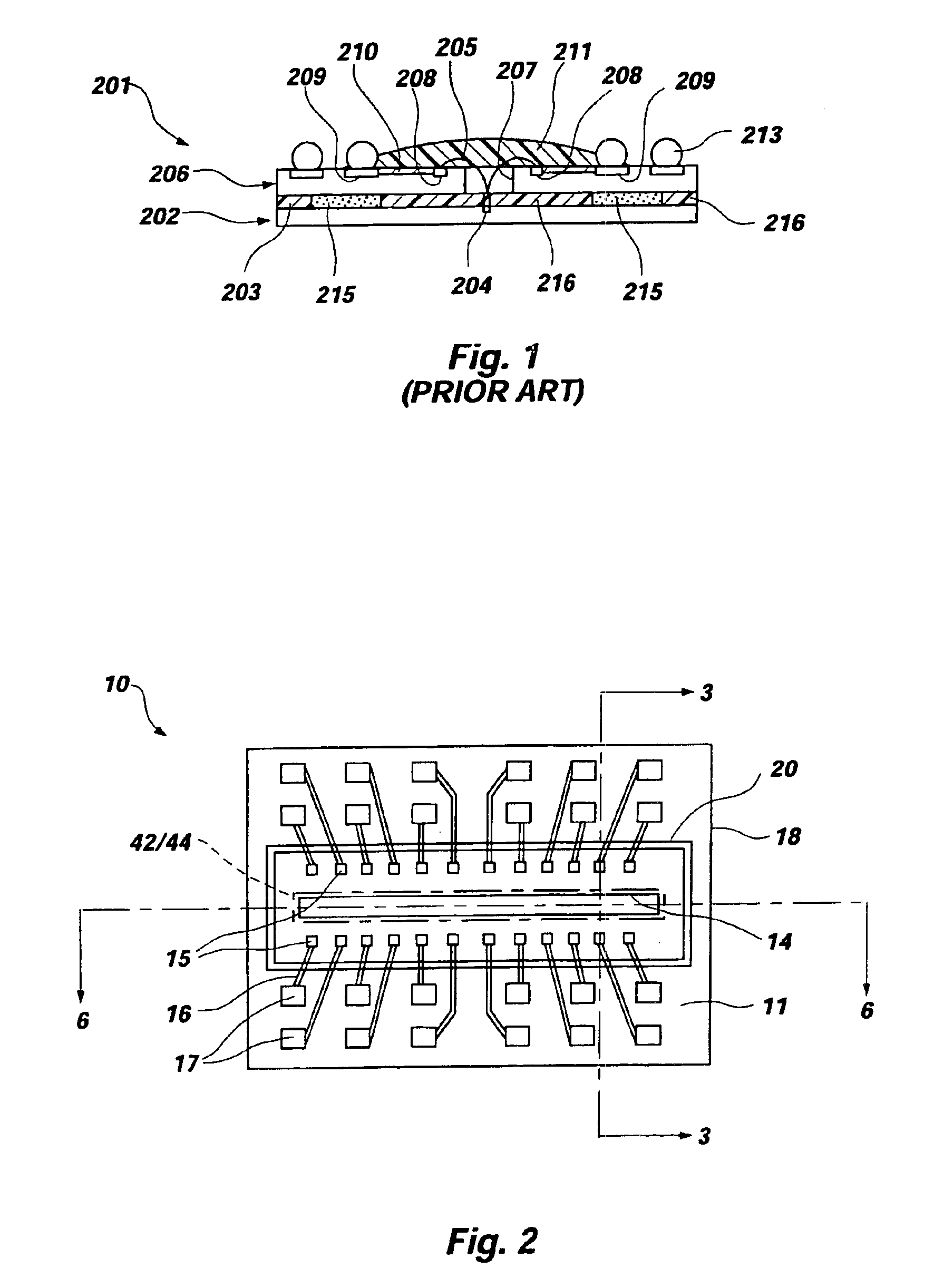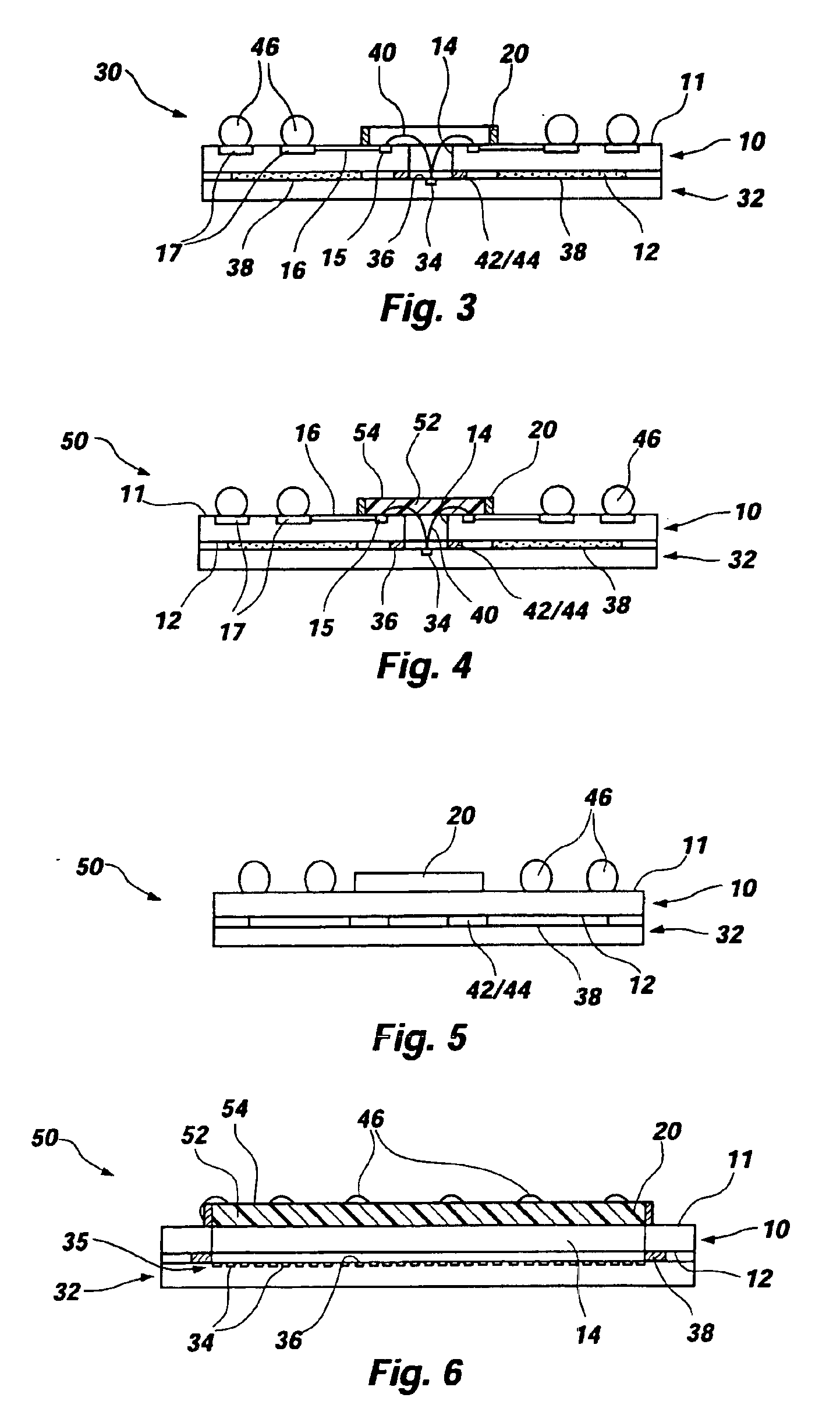Method for fabricating interposers including upwardly protruding dams, semiconductor device assemblies including the interposers
a technology of interposers and dams, which is applied in the field of interposers, can solve the problems of voids or bubbles, the introduction of underfill materials between a semiconductor die and an interposer secured thereto is somewhat undesirable, and the conventional semiconductor device package is relatively bulky, etc., to facilitate the formation of electrical connections, impart stability to the assembly, and low viscosity encapsulant material
- Summary
- Abstract
- Description
- Claims
- Application Information
AI Technical Summary
Benefits of technology
Problems solved by technology
Method used
Image
Examples
Embodiment Construction
[0053]With reference to FIG. 2, an exemplary interposer 10 incorporating teachings of the present invention is shown. Interposer 10 is a substantially planar member formed from, for example, FR-4 resin, semiconductor material (e.g., silicon), or any other known substrate material and having an upper surface 11 and a lower surface 12 (see FIGS. 2-6). As illustrated in FIG. 2, interposer 10 includes an elongate slot 14 formed therethrough. Slot 14 is positioned substantially along the center of interposer 10. Interposer 10 also includes first contact pads 15, or contacts, located proximate slot 14. Electrical traces 16 carried by interposer 10 connect each first contact pad 15 to a corresponding second contact pad 17 carried on upper surface 11 of interposer 10. As depicted, second contact pads 17 are arranged in an array over upper surface 11.
[0054]A dam 20 secured to upper surface 11 of interposer 10 protrudes upwardly therefrom. Dam 20 at least partially laterally surrounds slot 14...
PUM
 Login to View More
Login to View More Abstract
Description
Claims
Application Information
 Login to View More
Login to View More - R&D
- Intellectual Property
- Life Sciences
- Materials
- Tech Scout
- Unparalleled Data Quality
- Higher Quality Content
- 60% Fewer Hallucinations
Browse by: Latest US Patents, China's latest patents, Technical Efficacy Thesaurus, Application Domain, Technology Topic, Popular Technical Reports.
© 2025 PatSnap. All rights reserved.Legal|Privacy policy|Modern Slavery Act Transparency Statement|Sitemap|About US| Contact US: help@patsnap.com



